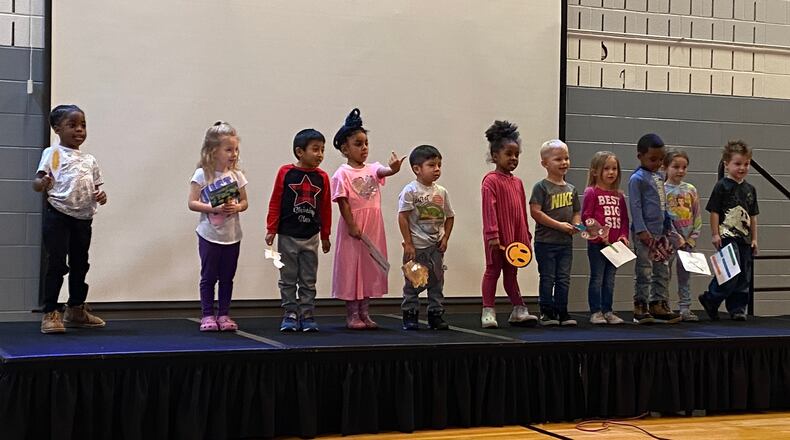In the 2017-2018 school year, 1,729 three- and four-year-olds were attending Preschool Promise sites, according to the nonprofit’s annual report. By the 2022-2023 school year, that number had risen to 3,855 3- and 4-year-olds.
Dayton voters passed an additional 0.25% tax in 2016 to fund several projects, including universal preschool in the city of Dayton. Over $24.6 million has been spent on getting quality preschool help for children since 2017.
The levy is up for renewal this year in March under Issue 6 and if passed, is expected to generate about $15 million annually. According to a December city ordinance, about $4.2 million in revenue each year would be put toward Preschool Promise.
In the eight school districts where Preschool Promise has partnered with the schools, there’s a wide range of the percentage of children reached. In Dayton, 1,310 4-year-olds, or 75%, attend preschools. In Kettering, 562 4-year-olds attend preschool, which is 83% of the district reached. But Trotwood-Madison has 363 4-year-olds, which is 100% of the 4-year-olds, and Jefferson Twp. has 11 children, or 16% of the 4-year-olds reached.
In all eight districts, Preschool Promise data shows that the children who attend Preschool Promise sites are more prepared for kindergarten than their peers who didn’t attend a Preschool Promise site.
Robyn Lightcap, the director of Preschool Promise, said there has been good progress in the last five years. But there’s a lot more they have to do, she said.
“While it’s great that our children that go to Preschool Promise sites are better prepared, they’re still not all the way there,” she said. “So we have so far to go. We have thousands of children that are not ready for kindergarten yet.”
Preschool Promise has done a lot of work in promoting Black boys, who are more likely to be disciplined unfairly and taken out of the classroom. Through a model that brings in Black male role models to preschool classrooms, a movie on Black boys and training teachers about the disproportionate affect that discipline has on Black boys, Preschool Promise is working to improve that.
But Lightcap said more work needs to be done with Black girls and other ethnicities, and she said there’s an even bigger hole in education for students with special needs.
“That’s something that we haven’t really touched yet with Preschool Promise and there is a huge, gaping hole there, and just a big need for us to figure out how to support families,” Lightcap said.
She noted that like many industries, staffing problems have affected the early childcare industry. Paying teachers more would help, she said.
Another problem that Preschool Promise is looking to fix is the early childhood part, for children even younger than 3. More could be done to work with infants and toddlers to help those parents, Lightcap said.
She pointed to another program, where home visitors employed by Preschool Promise work with families that are particularly at risk.
Shaniqua Thompson, a home visiting parent, said her work with Tiarra Williams, a home visitor, has helped her whole family. Thompson said Williams can answer her questions and advocate for her two children, Harper and Harmony, if needed, and Williams has been working on skills with them.
“Harper loves Miss T and is always excited to learn things and play when she comes over,” Thompson said.
About the Author



